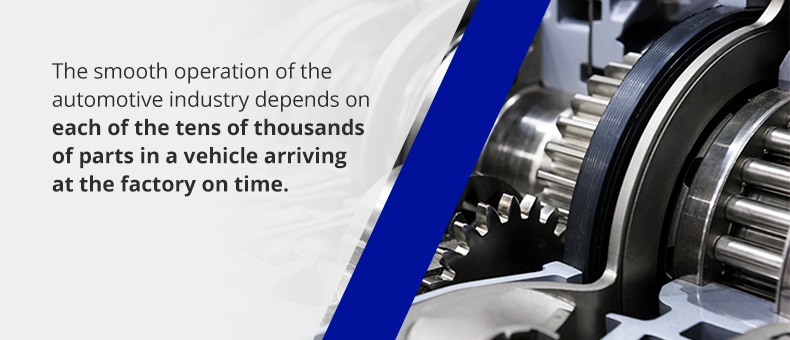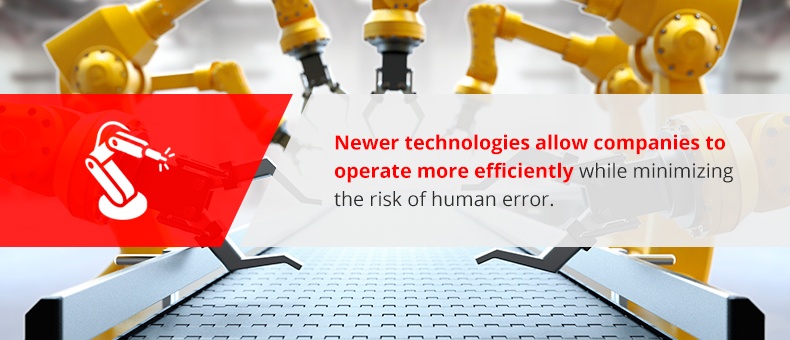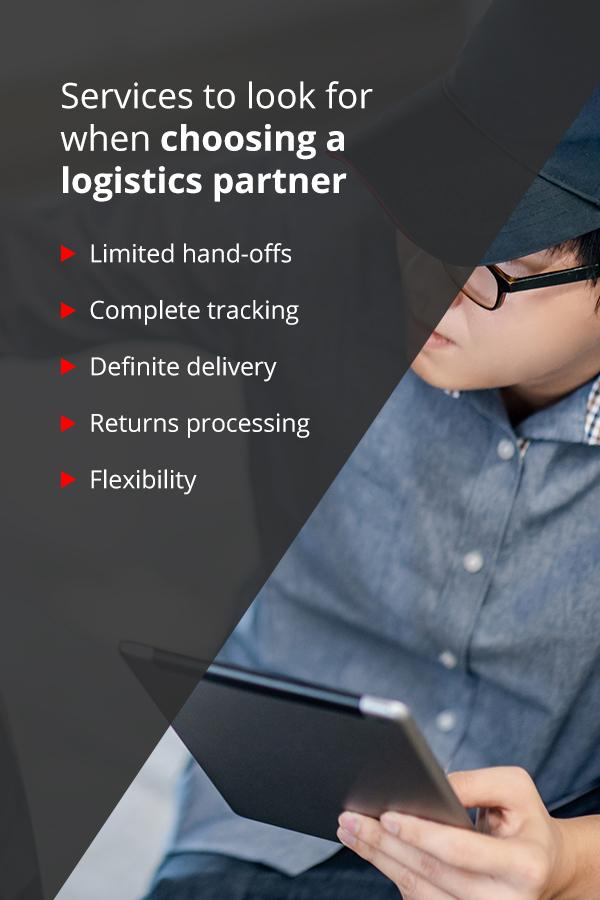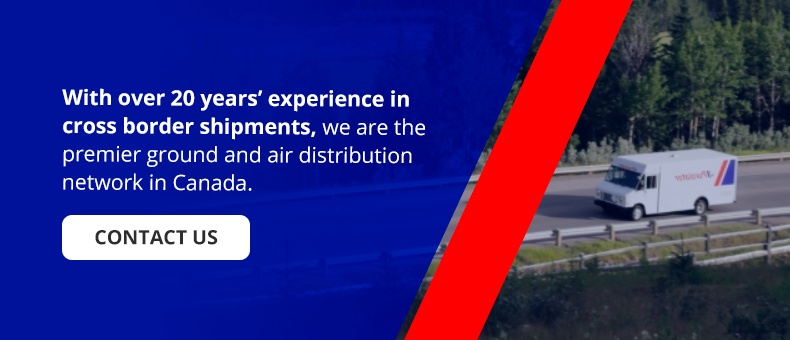Blog
Best Practices for Automotive Logistics
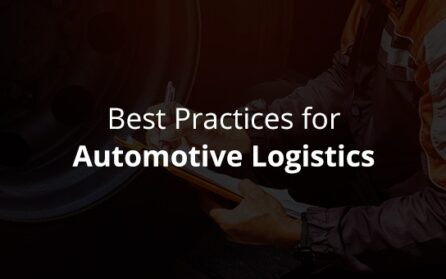
The automotive supply chain process is complex and intricate. Original equipment manufacturers (OEMs) need to get their vehicles to dealers, and there is also a bustling automotive aftermarket that delivers parts and supplies to dealers to repair and service vehicles.
To avoid issues, every piece of the automotive supply chain logistics puzzle needs to fall into place at exactly the right moment and location. If a shipment of new vehicles is delayed, a dealer won’t be able to make a sale in a timely fashion. If parts are delayed, the on-site shop won’t be able to make repairs or upgrades to cars, potentially leading to a loss of business.
Recognizing the potential supply chain and logistics challenges and following a few best practices can help your company remain competitive in an increasingly complex industry.
Automotive Logistics Challenges
Over the years, the automotive industry has evolved considerably. Today’s global industry would be unrecognizable to automakers of the past. However, the need to send parts and vehicles across borders and around the world has led to the development of a particular set of logistics challenges.
Additionally, the technological advances made in the manufacture of vehicles and in the complexity of the parts used in vehicles has also contributed to the appearance of certain challenges. OEMs, as well as tier I and II suppliers, can learn from the challenges present in the automotive supply chain to develop best practices and ways to move forward.
Supply Chain Quality Issues
Quality issues can arise in original parts included in a vehicle or in parts used to repair or maintain a vehicle. When a part or component isn’t high-quality, it can have a negative effect on the overall performance of a vehicle. Thousands of cars can ship from the vehicle manufacturer to dealers with a defective part, meaning that those vehicles will eventually need to be recalled and sent back to the manufacturer for repair and improvement.
Quality issues end up costing dealers and manufacturers time and money. Even if the vehicles are sold with the defective part, the issue is likely to be uncovered at a later point. Depending on when the problem is noticed, it could lead to injury or fatalities. Recalling the affected vehicles and having the owners of the cars bring them to a dealer for repairs is expensive and time-consuming.
OEMs can help minimize supply chain quality issues, keeping defective or poor-quality parts from making their way into vehicles. They can audit the manufacturing process and perform third-party quality control inspections to minimize the risk of faulty parts being added vehicles. They can track and test each part before it makes its way into a car or truck, ensuring the part is in good working order and that there isn’t a flaw in its performance or design.
Just-In-Time Inventory Management
When all is running well in the automotive industry, parts arrive at the automobile factory in time to be placed into the vehicles. The finished vehicles are then shipped out to dealers who receive them in time for major sales and promotions. The smooth operation of the automotive industry depends on each of the tens of thousands of parts in a vehicle arriving at the factory on time. A missed or late shipment can throw a wrench into the works, delaying the build process and interrupting the shipping of the final product.
As more and more vehicle manufacturers come to rely on just-in-time inventory management strategies and shipments, the risk of the process going wrong increases. Just-in-time strategies have their advantages, as they can help to minimize waste and better manage costs — but they also present new risks and challenges to manufacturers, notably the risk of delaying an entire batch of products because one small part is on backorder.
Increasing transparency in parts ordering and suppliers is one way to get a handle on just-in-time inventory management. While no one in the automotive industry can anticipate delays, being able to identify and plan for potential shortages can help companies get a better grip on inventory needs.
External Factors and Challenges
Certain factors are beyond the control of OEMs and others in the automotive supply chain. For example, global challenges and crises can prevent vehicle manufacturers in the U.S. from receiving the parts they need from other countries. Those same challenges and crises can make it challenging for U.S-based vehicle manufacturers to ship their vehicles to Canada or to supply Canadian dealers with the parts they need to service and repair customer’s cars.
In addition to unpredictable global challenges, such as natural disasters and public health crises, the evolution of consumer demand can also disrupt and challenge automotive logistics and inbound supply chains. An increase in demand for electronic vehicles instead of traditional gas-powered cars can mean that dealers are not able to receive the cars they need to meet customer demand.
Limited Price Transparency
Pricing can also be an issue that affects the automotive supply chain. Depending on the source of automotive parts, an OEM or dealer might find itself locked into paying increasingly high prices for the same components. Along with having high fixed costs, those in the automotive industry might find themselves having to deal with prices that fluctuate. Not knowing how much a particular part is going to cost and having little to no control over taxes and tariffs can be particularly challenging for automakers and dealers.
Some of the ways those in the industry can help increase price transparency include entering into contracts with suppliers that minimize price increases or that set increases on a predictable schedule.
Automotive Inbound Supply Best Practices
As the automotive industry continues to evolve and the expectations and demands of consumers shift, it’s imperative that your company maintain a series of logistics and supply chain best practices. The following can help you anticipate and meet consumer demand:
1. Embracing New Technology
Technology is changing the way cars are designed and operate — it’s also having a profound effect on the warehousing process, production line and distribution process. Newer technologies allow companies to operate more efficiently while minimizing the risk of human error. Automation speeds up the flow of various processes and allows a manufacturer to keep track of a shipment from the time it arrives at a warehouse to the time it leaves and arrives at the dealer.
Oftentimes, the less human interaction involved in the supply chain and logistics process, the better. When people need to get involved or are needed to perform repetitive tasks, there is a greater chance of mistakes or issues arising. Technological advances might not completely eliminate the margin for error in a supply chain, but they do help to greatly shrink the margin.
2. Relying on a Talented Team
While it’s a good move to streamline processes and take humans out of the equation when it comes to repetitive tasks, it’s also important to realize that you can’t fully replace people with machines or robots. Building a team made up of industry experts is an essential best practice for automotive logistics. Along with hiring the best in the industry, it’s also helpful to encourage ongoing training and education.
Keep up with changing technology and trends in supply chain logistics and encourage those who work on your team to do the same. The more prepared everyone is, the better able your company will be to adjust to changes, both large and small.
3. Developing a Plan
Planning can take multiple forms. It can mean properly scheduling shifts, so your company produces the materials and parts it needs to get to dealers on deadline — it can also mean anticipating periods of high demand and having processes in place to respond to those increases in demand, without creating bottlenecks or disruptions in service.
A plan is also a necessity when it comes to responding to external issues and factors beyond your company’s control. If there were to be a natural disaster that would make it difficult to ship your vehicles or parts across the border, what would your company do in the meantime? How would you respond to changes in the economy, to global or national health crises or to worker strikes and other concerns?
4. Implementing Smart Processes and Systems
Systems such as just-in-time inventory management and lean production processes are considered best practices in the industry today. Although just-in-time isn’t without its issues, especially if there is a disruption somewhere down the line, it does have its advantages. When properly implemented, just-in-time helps reduce waste. Your company orders only what it needs when it needs it. Assuming all goes well, your company will receive the required supplies and inventory “just in time.”
The strategy also helps to reduce costs and improve your overall bottom line. Since there is less of a need for storage or warehouse space, using a just-in-time strategy allows you to save on rent or real estate expenses. It also helps you save money by minimizing the chance of over-ordering and having more stock on hand than you can sell.
Similar to just-in-time strategies, lean production processes also allow automotive companies to save money and time. Lean manufacturing does away with any potential excesses or unneeded processes. It focuses on streamlining labor and materials used while increasing overall production.
5. Working With a Logistics Partner
You don’t have to handle every aspect of your supply chain and logistics on your own. In fact, it’s much better to partner with a transportation company that can manage the shipping and logistics process for you. You want to work with a company that has years of experience in route planning, border crossings and package handling.
Whether you are shipping fully-assembled cars to dealers or supplying aftermarket parts to repair shops, it’s essential for your shipments to arrive on or before the promised delivery date. If your shipments are late or if there’s a glitch in the supply chain somewhere, the consumer will be disappointed.
Some of the services to look for when choosing a logistics partner include:
- Limited hand-offs: The less a shipment is handled, the lower the risk of damage or loss. Look for a partner that minimizes the number of hand-offs, from shipment to delivery.
- Complete tracking: Where is the package or shipment? With complete tracking, you can keep tabs on a shipment from the minute it leaves your warehouse to the second it is delivered to the dealer.
- Definite delivery: Your logistics partner should give you the option of scheduling delivery.
- Returns processing: If a dealer needs to return unsold vehicles to you or unused auto parts, your logistics partner should be able to step in and streamline the returns process.
- Flexibility: The logistics and supply chain needs of one automotive company might be dramatically different from the needs of another. Your transportation partner should recognize your company’s uniqueness and be able to adapt the services it offers to best meet the needs of your business.
How to Manage Logistics in the Automotive Industry
Purolator International can assist companies in the automotive industry with managing their logistics, including shipping vehicles and parts from the U.S. to Canada. Whether you operate a factory that needs to supply dealers on the other side of the border or are providing the parts necessary for those dealers to offer aftermarket services and products to their customers, we can help.
For U.S.-based companies looking for increased peace-of-mind, Purolator International is a non-asset-based expedited forwarder that provides broad coverage, fast transit times, and competitive pricing, all wrapped in PuroTouch – the highest level of customer service and proactive transportation management in the business.
At Purolator International, we provide clients with hassle-free and on-time express, freight and parcel shipping solutions primarily from the U.S. to Canada. With over 20 years’ experience in cross border shipments, we are the premier ground and air distribution network in Canada.
Contact us today to learn more about how we can meet your logistics needs.
